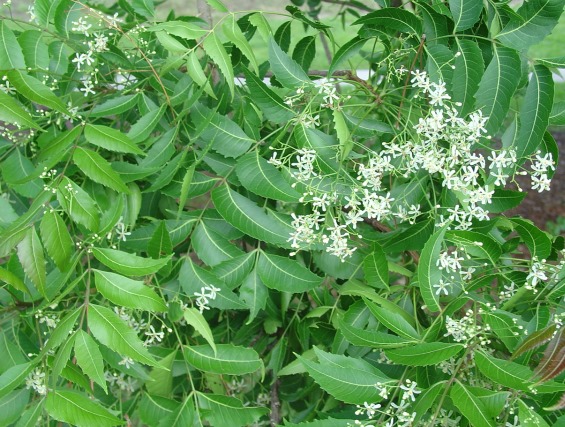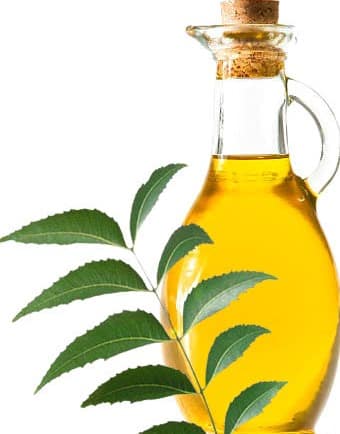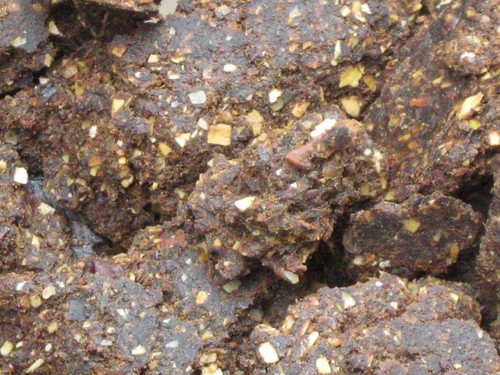Neem Cultivation:

Neem Cultivation and Its Importance:- Well, Neem is one of the wonder trees originated in India. Why the Neem tree is now gaining the importance worldwide? Well, because it has an excellent scope of commercialization and importance in agriculture, veterinary, cosmetics, medicines. Neem is an eco-friendly and natural source of phyto-chemicals and nutrients, due to this fact it gained superb importance in agriculture sector. Organic farming is the one which gets more benefits from Neem based products. As we know most of the crop requires good nitrogen in the soil; now a days, urea is coated with neem to minimize the losses of nitrogen. Neem oil, neem seed cake and neem pesticides are neem based products mainly used in agriculture sector especially in organic farming. The best part of the neem tree is, they can be grown in any soils including rocky soils. They are hardy and resistant to drought conditions. As more chemicals are being pumped in today’s agriculture, neem would defiantly a future hope for agriculture / organic sector. Even one can get profits by making neem based products with minimal investments. Neem based products are excellent when compared to commercially available pesticides and fertilizers. Neem trees can be grown in both tropical and sub-tropical regions. Neem tree can reach a height up to 20 to 25 meters with the diameter of the bark ranging between 2.0 to 3 meters. This tree has deep root system and has wide spreading branches mostly with white flowers. In Ayurveda, neem has lot of importance and considered as “Sarva Roga Nivarini” which means, universal cure for all problems. The most interesting fact about neem tree is; this tree releases a higher amount of oxygen than other trees during the day. Neem trees increase the soil fertility and water retaining/holding capacity. Apart from this neem tress can change the acidic soils to neutral ones. Finally one word we can say is it has very positive affect on environment.
Family Name of Neem:- Meliaceae.
Botanical/Scientific Name of Neem:- Azadirachta indica.
Genus of Neem:- Azadirachta.
Uses and Health Benefits of Neem:- The following are some of the health benefits and uses of Neem based products.

Parts Used : Leaves, seeds/fruits, bark and wood.
- Neem boosts immune strength.
- Neem improves skin health especially acne.
- Neem is excellent for oral health and helps in relieving bad breath.
- Neem helps to protect from diabetes.
- Neem helps in treating malaria.
- Neem is excellent for hair health and especially good for dandruff removal.
- Neem prevents pimples on skin.
- Neem helps in treating fungal infections.
- Neem helps in detoxifying the blood.
- Other commercial uses of Neem are; Neem cake is being used in agriculture, neem fruits are being as green manure for organic farming. Neem based products are used in cosmetics and pharmaceutical industry.
- Other uses include, timber, lubricants, fuel-wood, fodder, oil, fertilizers and pest repellent.

Local Names of Neem in India:- Neem (Hindi,Assamese, Odiya, Manipurihttps://www.agrifarming.in/wp-content/uploads/2016/12/Neem-Cake.jpg), Veppai (Tamil), Kadulimba (Marathi), Bevu (Kannada), Dhanujhada/Limbda (Gujarati), Nim (Bengali), Nimmh (Punjabi) and Vepa (Telugu),
Climate Requirement for Neem Cultivation:- Neem trees thrives well in all regions having average annual rainfall of 350 mm to 1200 mm. Neem tree can tolerate high temperatures even up to 50 to 52°C. These trees cannot withstand intensive shade, frost, extreme cold or freezing conditions.
Soil Requirement of Neem Cultivation:- Neem trees grow well in wide range of soils. However, black cotton soils are best for growing these trees. Neem can be grown in even in rocky soils where water availability is a major problem. Neem trees increase the soil fertility and helps in neutralising acidity in the soil.
Propagation in Neem Cultivation:- Propagation can be done be seeds. However, propagation with root cuttings is also possible.
Land Preparation, Planting, and Spacing in Neem Cultivation:- Land or main filed should be ploughed couple of time s to remove any weeds and required pits should be dug. Neem seedlings can be raised on nursery beds and transplanted to main field or they even can be sown directly in the field. Planting or transplanting neem trees before or during rainy season is the best for their establishment. For seed collection and planting, use fruits at the yellow green colour stage. Collected fruits should be depupled immediately. Germination of seeds depends on the storage. If the neem seeds are fresh, the chances of germination would be about 90%. Soak the seeds in cold water for a day (24 hours) for better germination. Germination of seeds starts after a week (6 to 7 days). Neem seedlings should be transplanted when they are 8 to 10 cm tall with a tap root of 15 cm long. Dry areas require more aged seedlings for better survival. Neem seedlings 25-30 cm height should be transplanted (beginning of the rainy season) in pits of 30 cubic centimeters at a distance of 3 meter x 3 meter.
Irrigation in Neem Cultivation:- Neem trees require or survive with little water. However they need plenty of sunlight and sensitive to frost and extreme shade conditions. Avoid water logging conditions and poorly drained soils. They grow well in regions where the average annual rain fall is low (200 to 250 mm).
Manures and Fertilizers in Neem Cultivation:- VAM Fertilizer application of 50 grams, 20 grams of Azhospirillum and Phospobacteria to be applied on regular basis.
Intercultural Operations in Neem Cultivation:- Weed free filed always required for any cultivation. In neem cultivation, generally 2 to 3 weedings should be carried out during the first year and 1 weeding during the second year. Thinning should be done in case of transplanted seedlings inn the filed at the age of 4 to 5 years.
Pests and Diseases in Neem Cultivation:- Tip borer, Tea mosquito bug are the common pests and diseases that affect seedlings and young plants. Pulvinaris maxima and Heliothrips haemorrhoidalis are also found in neem cultivation. Other pests and diseases include leaf web blight, leaf spots. For symptoms and prevention methods, contact your local agro-forestry department.
Note: It is always advised to contact your local horticulture department for symptoms of diseases and pests and their control measures in Neem Cultivation.
Harvesting in Neem Cultivation:- Neem tree starts bearing fruits after 4 to 5 years and comes to full bearing at the age of 10 -11 years.
Yield in Neem Cultivation:- Well, the yield depends on many factors such as tree age, cultivation practices, variety and climatic conditions. On an average one can obtain about 10 – 20 kg of seeds per tree during initial years. After tenth year or once the trees attain maturity, yield will be increased to 35- 50 kg per tree. The oil content in neem seeds will be more in regions where there is a good rainfall. Usually the yield of neem tree stabilizes from ninth year. The economic life of neem tree is estimated about 150 to 200 years.
Marketing of Neem Based Products:- You can sell to local farmers as green manure and contact any herbal/ pharmaceutical companies. Generally 1 kg of neem seed costs or price in the market is about 6 to 10 rupees/kg.
For Malabar Neem Farming: Read here.
For Sheep Farming: Read here.
What is the spacing between trees? How many trees can be planted in one acre of land? What are suitable inter crops?
Well, Spacing depends on variety, planting method (like high density or normal) and soil type.
Here is another Lime Farming article which has included spacing for different methods. Read Lime Farming.
I would like to know where all neem plantation are in our country.
Where to buy seeds in bulk.
Thanks
I’m a young Entrepreneur looking forward to produce organic products.
I need to plenty of neem leaves once my project is tested and ready to produce and market into the market.
Please let me know where neem tree farms are located in Tamil Nadu and how to approach them.
Thanks
I’m starting neem cultivation, kindly approach me
please give me any notes for neem cultivation practices please sent my e mail id,i am working in neem plantation
is in only available in Indian subcontinent?